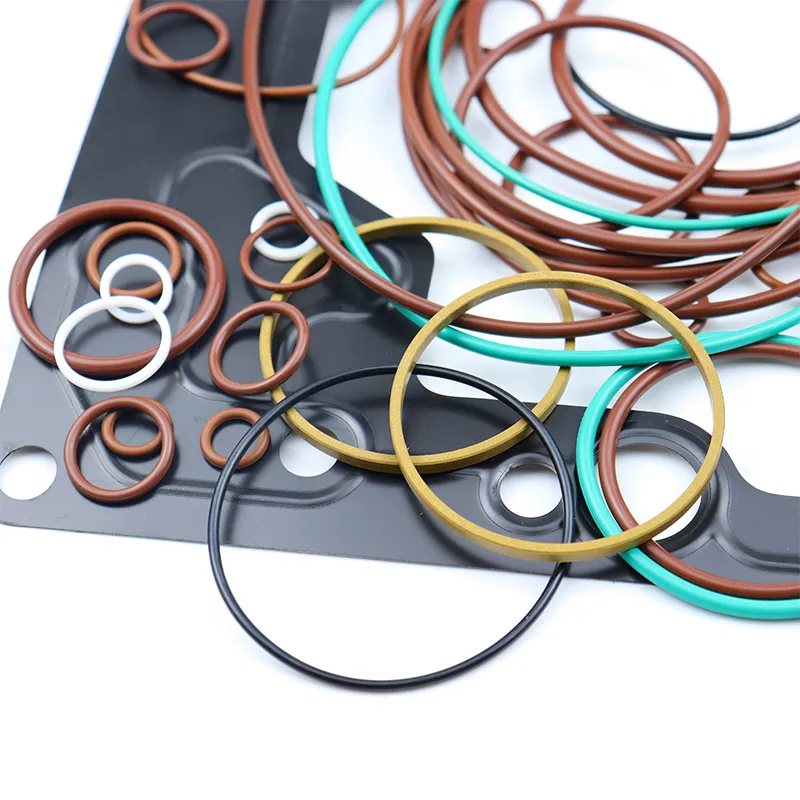Dec . 05, 2024 16:57 Back to list
High-Performance Metric Rod Wipers for Precision Machinery Applications
Understanding the Importance of Metric Rod Wipers in Engineering Applications
In modern engineering, precision and reliability are paramount, especially in applications that require the movement of mechanical components. One crucial element in ensuring this precision is the use of metric rod wipers. These components play a vital role in maintaining the integrity of linear motion systems, particularly in hydraulic and pneumatic cylinders. This article explores the significance, design, and application of metric rod wipers, highlighting their role in enhancing performance and prolonging the lifespan of machinery.
What are Metric Rod Wipers?
Metric rod wipers are specialized sealing devices designed to keep contaminants such as dust, dirt, and moisture from entering the interior of hydraulic or pneumatic cylinders. They fit over the rod of the cylinder and create a tight seal as the rod extends and retracts. By performing this protective function, rod wipers contribute to the smooth operation and efficiency of the entire system.
The Importance of Contamination Control
In any hydraulic or pneumatic system, contamination can lead to significant problems, including wear and tear, reduced efficiency, and even complete system failure. The presence of particles and contaminants can cause damage to seals, leading to leaks and loss of pressure. This can result in decreased performance and potentially costly downtime for repairs. Metric rod wipers act as the first line of defense against these issues, ensuring that the internal environment remains clean and functional.
Material and Design Considerations
The effectiveness of a metric rod wiper largely depends on its material and design
. Common materials used for rod wipers include polyurethane, rubber, and various composite materials. Each material has its own unique properties, such as resistance to abrasion, temperature fluctuations, and chemical exposure. When selecting a rod wiper, engineers must consider the specific operating conditions of their application, including the range of temperatures, potential chemical interactions, and the type of fluid being used.metric rod wiper

The design of the wiper must also be tailored to the application. Different profiles, such as lip designs or scraper features, can enhance the wiper’s ability to remove contaminants. Additionally, considerations for the fit and clearance between the wiper and the rod are crucial to ensuring that the seal is effective without causing undue wear.
Applications of Metric Rod Wipers
Metric rod wipers are widely utilized across various industries, including automotive, aerospace, manufacturing, and construction. In hydraulic cylinders found in construction machinery, for instance, rod wipers prevent grime from degrading the hydraulic fluid and damaging internal components. In the automotive sector, they are essential for maintaining the functionality of hydraulic brake systems and power steering mechanisms. Additionally, in aerospace applications, the need for reliable operation under extreme conditions makes metric rod wipers indispensable.
Maintenance and Replacement
While metric rod wipers are designed for durability, they are not immune to wear over time. Regular inspection and maintenance of these components are crucial to ensure the continued performance of hydraulic and pneumatic systems. Signs of wear, such as visible cracks or tears, indicate that replacement is necessary to prevent further damage to the system. Engineers and maintenance personnel should establish a proactive maintenance schedule that includes checking the condition of rod wipers.
Conclusion
In summary, metric rod wipers play an essential role in the functionality and longevity of hydraulic and pneumatic systems. Their ability to control contamination and maintain a clean operational environment is vital for the reliability of machinery across various industries. Understanding the importance of these components, along with their materials and design considerations, empowers engineers to make informed decisions that enhance the performance of their systems. Investing in quality rod wipers and adhering to regular maintenance protocols will ultimately lead to greater efficiency and reduced operational costs in the long run. As technology continues to advance, the design and functionality of metric rod wipers will undoubtedly evolve, ensuring their place as a key component in engineering applications.
-
TCN Oil Seal Metal Ring Reinforcement for Heavy Machinery
NewsJul.25,2025
-
Rotary Lip Seal Spring-Loaded Design for High-Speed Applications
NewsJul.25,2025
-
Hydraulic Cylinder Seals Polyurethane Material for High-Impact Jobs
NewsJul.25,2025
-
High Pressure Oil Seal Polyurethane Coating Wear Resistance
NewsJul.25,2025
-
Dust Proof Seal Double Lip Design for Construction Equipment
NewsJul.25,2025
-
Hub Seal Polyurethane Wear Resistance in Agricultural Vehicles
NewsJul.25,2025
-
The Trans-formative Journey of Wheel Hub Oil Seals
NewsJun.06,2025
Products categories
















